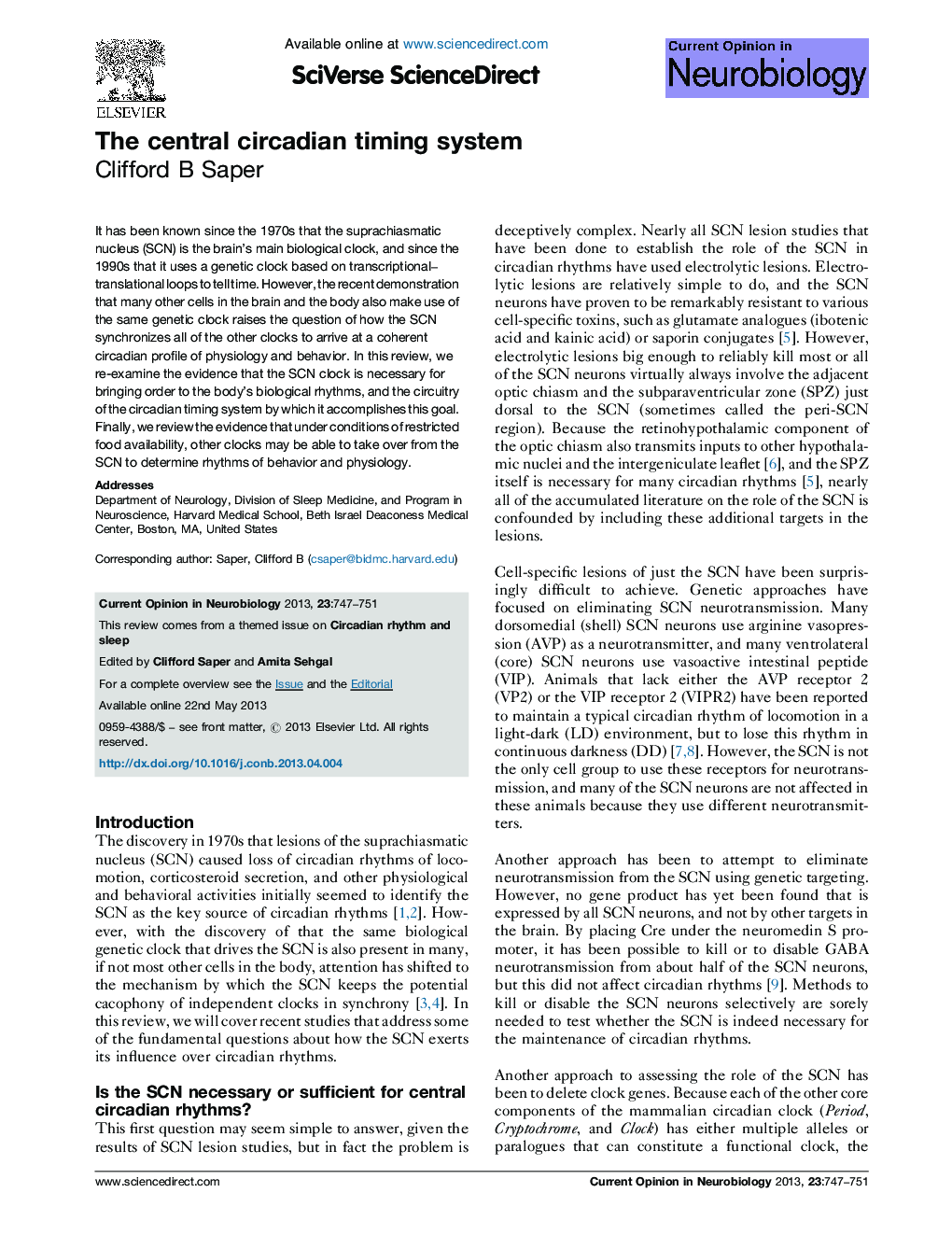| کد مقاله | کد نشریه | سال انتشار | مقاله انگلیسی | نسخه تمام متن |
|---|---|---|---|---|
| 6266592 | 1294915 | 2013 | 5 صفحه PDF | دانلود رایگان |
- Clock gene expression solely in the suprachiasmatic nucleus (SCN) is sufficient to drive circadian rhythms of physiology and behavior.
- The output from the SCN is relayed through the subparaventricular zone to control circadian rhythms of physiology and behavior.
- In the absence of the suprachiasmatic nucleus, circadian rhythms of physiology and behavior can be restored by restricting animals to four hours per day of feeding time.
- Clock gene expression in the dorsomedial nucleus during restricted feeding is sufficient for driving circadian rhythms of physiology and behavior.
It has been known since the 1970s that the suprachiasmatic nucleus (SCN) is the brain's main biological clock, and since the 1990s that it uses a genetic clock based on transcriptional-translational loops to tell time. However, the recent demonstration that many other cells in the brain and the body also make use of the same genetic clock raises the question of how the SCN synchronizes all of the other clocks to arrive at a coherent circadian profile of physiology and behavior. In this review, we re-examine the evidence that the SCN clock is necessary for bringing order to the body's biological rhythms, and the circuitry of the circadian timing system by which it accomplishes this goal. Finally, we review the evidence that under conditions of restricted food availability, other clocks may be able to take over from the SCN to determine rhythms of behavior and physiology.
Journal: Current Opinion in Neurobiology - Volume 23, Issue 5, October 2013, Pages 747-751
